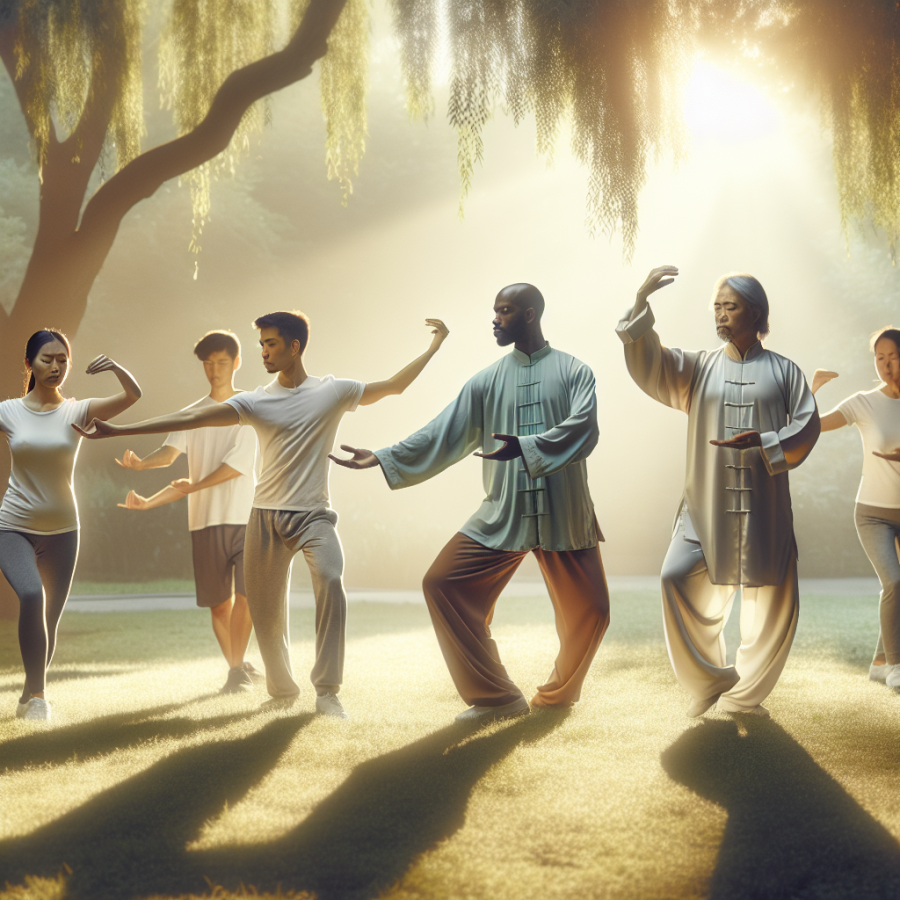Mastering the Flow: Embracing Tai Chi as a Pathway to Equilibrium
Tai Chi, an ancient martial art originating from China, offers a unique blend of gentle physical movement, meditation, and breathing techniques. It serves not only as a means of self-defense but also as a tool to promote mental peace and physical balance. For individuals seeking harmony in their hectic lives, embracing Tai Chi can be a transformative experience. It is a pathway to equilibrium that combines the wisdom of the East with the demands of modern lifestyles.
The core of Tai Chi practice lies in its slow, purposeful movements which are designed to enhance the flow of 'Qi' or life energy throughout the body. This flow is crucial to maintaining balance and harmony within the self. By focusing on precise postures and transitions, practitioners can cultivate a state of mindfulness, which allows for an increased awareness of their body in space and in relation to their surroundings.
As one begins to delve deeper into the practice of Tai Chi, they may notice an improvement in their core strength and stability. The low-impact nature of Tai Chi makes it accessible to people of all ages and fitness levels, providing a foundation to build upon physical equilibrium. Regular practice can lead to better posture, reduced joint stiffness, and an overall increase in mobility. This physical balance is intimately connected to inner serenity, as a body free from strain and discomfort can significantly ease mental stress.
One of the unique aspects of Tai Chi is the concept of 'Yin' and 'Yang,' which are dynamic and opposing forces in the universe, representing balance. Tai Chi teaches how to move in harmony with these forces rather than against them, exemplifying how balance can be harnessed both internally and externally. By learning to apply these principles to both Tai Chi and daily life, practitioners can develop resilience in the face of life's ups and downs, embodying a tranquil poise that remains undisturbed by external chaos.
Tai Chi's meditative component is equally important. As one flows through the motions, attention is directed inward, promoting a meditative state that clears the mind and reduces anxiety. This enhanced state of mindfulness can extend into daily life, improving concentration, emotional regulation, and the ability to respond to stress with greater calmness. The meditative aspect of Tai Chi helps in fine-tuning the body's response to stressors, paving the way to mental and emotional equilibrium.
Another element of Tai Chi is its focus on deep diaphragmatic breathing, which is synchronized with the movements.
Read also:
Conquering Uncharted Terrain: The Thrill of Off-Road Adventure
The Harmonious Dance of Mind and Body: Techniques of Tai Chi for Inner Peace
Tai Chi, an ancient Chinese martial art known for its gentle movements and profound health benefits, offers a holistic approach to well-being by harmonizing the mind and body. Practitioners of Tai Chi learn to cultivate inner peace through a series of techniques that emphasize fluidity, mindfulness, and relaxation.
One key aspect of Tai Chi is rhythmic breathing. Coordinating one's breath with movement is essential in Tai Chi, as it enhances oxygen flow, calms the nervous system, and deepens relaxation. As you move through the Tai Chi forms, inhale slowly through the nose, filling the lower abdomen and allowing the breath to rise naturally to the chest. Exhale through the mouth or nose, letting go of tension and centering the mind.
The movements in Tai Chi are purposefully slow and deliberate, which encourages a heightened awareness of one's body in space. This mindful movement helps to develop balance and proprioception, reducing the risk of falls, especially in older individuals. Paying attention to the gentle transitions and weight shifts in the forms fosters a deeper connection between the mind and the body, encouraging a meditative state.
Tai Chi also emphasizes the principle of softness over strength. Rather than relying on muscular force, practitioners use relaxation and yielding to overcome hardness. This principle teaches adaptability and resilience, promoting a sense of peace when faced with stress or confrontation. By practicing softness, individuals learn to respond to life's challenges with grace and flexibility.
Another technique involves visualization, where practitioners imagine a flow of energy, or 'qi', moving through their bodies with each motion. This visualization enhances the mind-body connection and can lead to a more profound experience of inner calm. Visualizing this energy flow helps to guide the physical movements, ensuring they are executed with intention and purpose.
Balance is a fundamental component of Tai Chi, not just in the physical sense, but also in harmonizing the opposing forces of 'yin' and 'yang'. Each movement in Tai Chi contains elements of both yin (soft, relaxed, and yielding) and yang (hard, strong, and active). Mastering the interplay of these energies leads to a more balanced state of being.
Tai Chi postures are often inspired by natural elements and animals, reinforcing our intrinsic connection to nature. Practicing these forms outdoors can enhance the sense of harmony and relaxation, as the natural surroundings contribute to the calming atmosphere and foster mindfulness.




